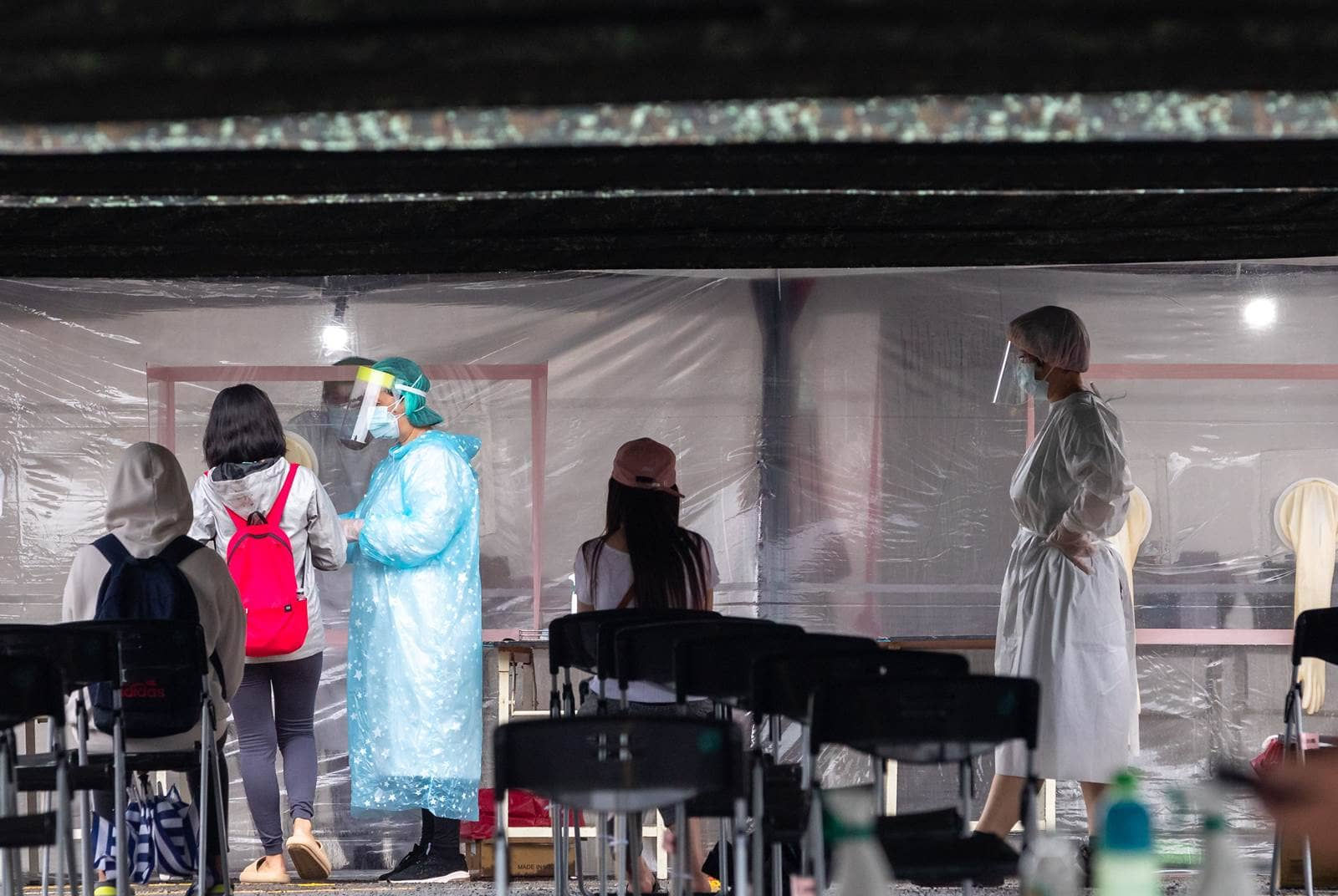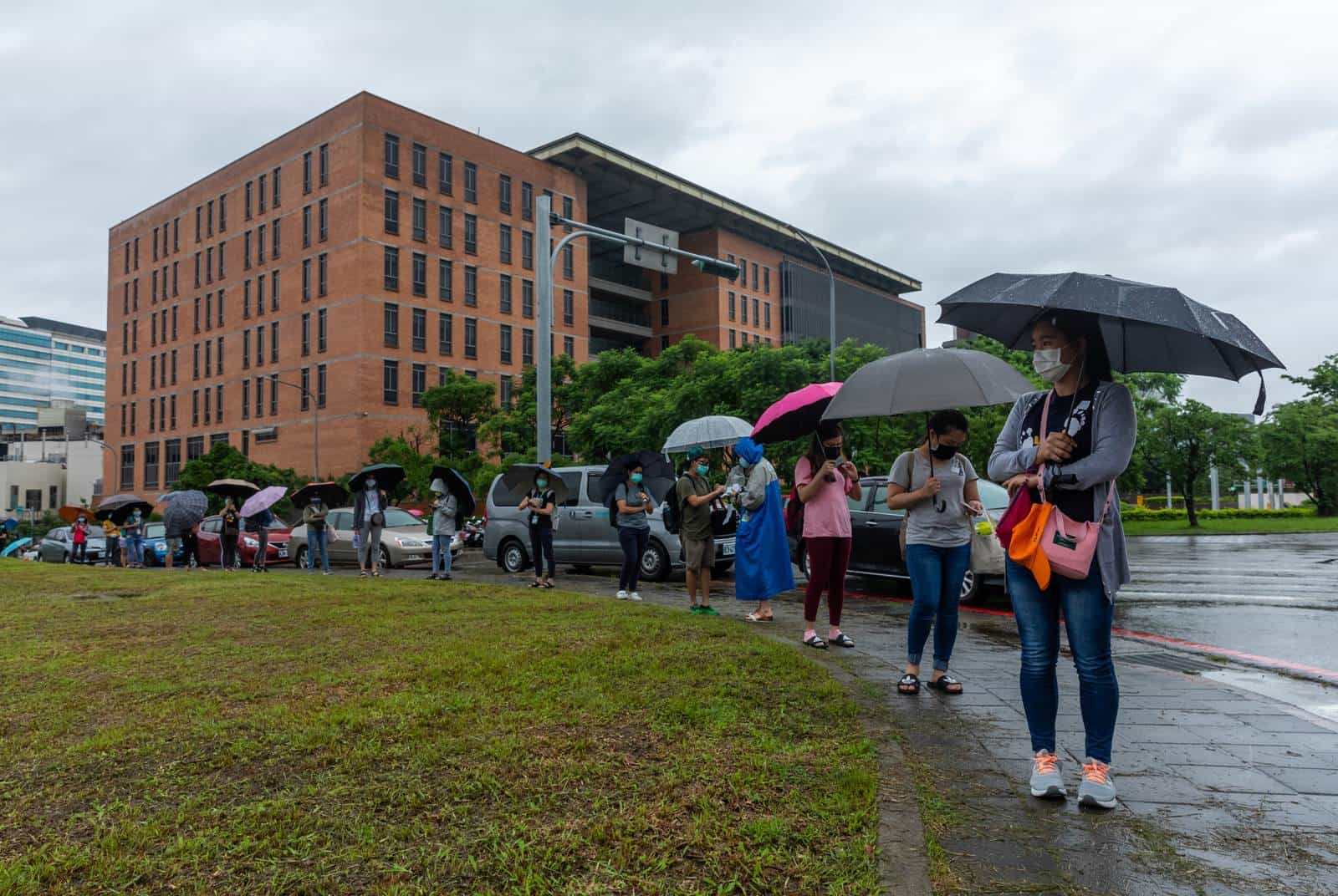Hsinchu Science Park’s pandemic response holds Taiwan’s economic lifeline

Source:Chien-Ying Chiu
Is the rapid screening of 5,213 migrant workers in five days enough? As community spread among foreign workers at King Yuan Electronics in Zhunan widened, the Hsinchu Science Park took emergency action to conduct rapid screening to cut off the transmission chain. How has it managed to hold the line?
Views
Hsinchu Science Park’s pandemic response holds Taiwan’s economic lifeline
By Elaine Huangweb only
♦ Updated daily |Taiwan’s Covid-19 Outbreak
The Community spread of COVID-19 among migrant workers in Zhunan Village in Miaoli County continues to expand. As of June 8th, semiconductor packaging facilities King Yuan Electronics, Greatek Electronics and major networking and communications manufacturer Accton Technology, had a total of 265 confirmed cases. Taiwan Semiconductor (TSMC) supplier Foxsemicon Integrated Technology (FIT), a semiconductor equipment plant under the direction of the pan-Hon Hai Precision group in Zhunan, has also had six cases among migrant workers.
Mixed residential and work housing are proven to be the containment breach.
King Yuan Electronics’ migrant worker dormitory is managed by Sheng Hua Manpower Resource Corporation. Itinerant workers from Greatek Electronics also resided there.
The Zhunan dormitory for Accton Technology’s migrant workers is managed by Dart-Wits Manpower, which also housed workers from Foxsemicon.
 (Source: Pei-Yin Hsieh)
(Source: Pei-Yin Hsieh)
“Each room houses eight people, like a college dormitory,” says one concerned Foxsemicon staff member. Snack shops and factory housing proliferate across the street from King Yuan Electronics’ Zhunan facility, making the strip popular among both local and foreign workers for after-work dining and shopping. Thus it is also not likely to be spared from transmission.
A total of 62 foreign guest workers from FIT are currently being isolated together in a government quarantine center. A rapid screening tent has been set up outdoors in the parking lot of the company’s Zhunan facility, staffed with medical personnel engaged by the company. Following screening of all personnel on June 9th, work was halted on the production line for three days until all Taiwanese staff could undergo rapid screening and be cleared to take up positions on the line.
The eye of the storm of community spread has widened, and the Hsinchu Science Park sits within the 10-plus kilometer radius around Zhunan, setting major semiconductor manufacturers like TSMC, United Microelectronics (UMC), and MediaTek on edge.
Companies with high numbers of migrant workers on their premises are anxious to conduct rapid screening, only to face the vexing situation of hospitals filled to capacity.
The Hsinchu Science Park employs 160,000 workers, including over 10,000 foreign staff. Together they comprise the critical manpower that powers the park’s monthly turnover of more than NT$100 billion.
Should the Hsinchu Science Park’s virus containment be breached, the impact could be felt throughout Taiwan’s semiconductor industry, and even across the worldwide industry supply chain, with potentially disastrous consequences.
“The anxiousness is palpable. We need to hold the Hsinchu Science Park in order to safeguard Taiwan’s economic lifeline,” remarked Hsinchu Mayor Lin Chih-chien (林智堅) during an interview.
Lin revealed that at 9:00 a.m. on the morning of June 3rd he received a call from a top semiconductor company executive based in the Hsinchu Science park. Given the tense situation at King Yuan Electronics at the time, the executive was quite nervous, and hoped that Mayor Lin could connect his company with a hospital to conduct screening on their migrant workers.
Taking action, he urgently contacted five Hsinchu area hospitals, including NTU, Mackay Memorial, Hsin Chu Armed Force Hospital, Cathay General Hospital, and Nan Men General Hospital. “They were afraid there might be a large influx of people into the hospitals, so if the city government could provide outdoor screening stations and they were willing to redirect staff, assign shifts, and devote manpower to screening, we reached a quick consensus,” reflected Mayor Lin.
Science park screening station set up in 18 hours
Wasting no time, he immediately placed calls to President Tsai and Dr. Wu Tsung-tsong, Minister of Science and Technology (MOST), who urgently deployed the military to support the construction of screening sites. After hanging up the phone at noon on June 3rd, by 4:00 p.m. the next afternoon an over-8,250 square-meter screening station had been completed, taking just 18 hours from start to finish.
 (Source:
Chien-Ying Chiu)
(Source:
Chien-Ying Chiu)
Within two days of opening, the station had completed screening of migrant workers from 17 different companies with a large number of foreign workers, including UMC and Innolux. As of June 9th, a total of 5,213 screenings had been conducted. And by June 5th, Innolux, also based in Zhunan, had completed screenings of approximately 500 migrant workers, all of which yielded initially negative results.
Still, a thousand screenings per day is not enough. Some companies have opted to conduct screenings in-house.
AU Optronics (AUO), based in the Hsinchu Science Park, operates production facilities spanning Taoyuan and Taichung with around 2,000 migrant workers in total. The company decided to conduct screening on its own premises, setting up an in-house screening station staffed by medical personnel from a cooperative hospital. “This way we reduced the risks stemming from movement,” relates the company’s communications office. As of June 8th, around 600 screenings of foreign operations staff had been completed in Taoyuan and Hsinchu, yielding negative results across the board to date.
Quite a few enterprises are arranging rapid screening not just for foreign guest workers but also for their local staff. And both Hsinchu City and Zhunan have set up community screening stations for local citizens.
Hsinchu Mayor Lin relates that currently the chief task is to cut off the transmission chain. To that end, Hsinchu has mandated that migrant workers from different companies not be housed together on the same floor, in addition to load reduction. Further, the city is assisting companies to set up screening stations to ascertain the condition of migrant workers and ensure that itinerant workers under isolation, while immobilized, also receive cost-of-living stipends from their employers.
“The consensus among businesses in the science park is that continued production operation is paramount,” relates Mayor Lin.
However, it is not necessarily over after rapid screening, as positive results must await a further PCR test. So what happens to these subjects in the meantime?
The current bottleneck in the Hsinchu Science Park’s pandemic containment is found in the collective quarantine facilities.
“There aren’t that many isolation points in Miaoli,” relates an executive at a Zhunan tech manufacturer, clearly troubled. Once staff members have completed rapid screening, he worries that they could become confirmed cases, while also having to arrange containment hostels for contacts of confirmed cases. The pressure is tremendous.
 (Source:
Chien-Ying Chiu)
(Source:
Chien-Ying Chiu)
Taking inventory of isolation hostels in the Hsinchu-Miaoli region, Hsinchu City has 699 rooms, while Hsinchu and Miaoli counties have a little over 300 combined rooms to accommodate those requiring home isolation and home quarantine.
Recently the Ministry of Labor announced a “one person per room” approach for the home isolation of migrant workers, with stipends of NT$1,000 per person. However, the typical housing situation of eight to 10 persons per room would equate to an eight-fold cost burden for businesses. This has led to protests by labor resource agencies.
Migrant labor human rights organizations have called on the government to arrange “public dorms” to resolve current management issues. However, such a solution is nearly unfeasible over the short term.
Karen Hsu, executive director of Global Workers’ Organization, Taiwan, relates that science park-based businesses generally operate on a larger scale, and thus the dormitories managed by contracted agencies provide better environments.
Hsu underscores that many migrant workers at smaller factories in Taoyuan and across central and southern Taiwan are forced to reside together under even poorer conditions in cramped quarters. Thus, as the government and industry focus on the Hsinchu Science Park, they should look squarely at potential containment breaches outside of that focus.
For the foreign workers who have left their homelands to work in Taiwan only to be isolated, “Taiwan’s government and enterprises should send the message that ‘We’ll take good care of you,’” she stresses. As partners in Taiwan’s economic development, migrant workers should not be cut off at the first sign of risk.
Have you read?
♦ Updated daily |Taiwan’s Covid-19 Outbreak
♦ Taiwan’s hospitals fighting the COVID-19 blues
♦ COVID-19 relief amid record economic growth; who suffers, who thrives?
Translated by David Toman
Edited by TC Lin
Uploaded by Penny Chiang






